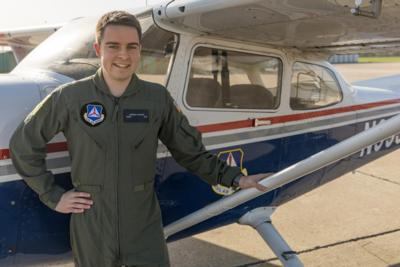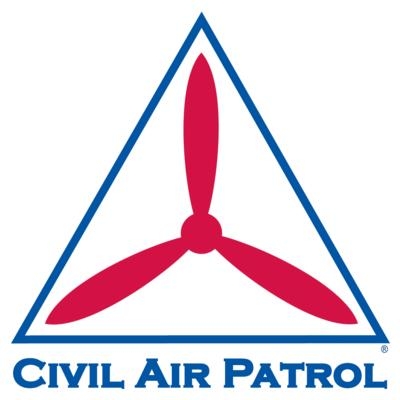Mon, Aug 02, 2021
When Things Go Bad, CAP Helps Set Them Right
By Gene Yarbrough
Civil Air Patrol (CAP) held a press briefing at OSH 21 highlighting their storied history and lifesaving technology and capabilities.

CAP is the 7th largest air force in the world with approximately 560 aircraft and is the largest drone operator in North America with over 2100 units deployed in every state of the union. Deploying both manned and unmanned aircraft systems is a key aspect of their duties to provide search and rescue services, along with myriad other important functions. The Civil Air Patrol is a civilian auxiliary of the United States Air Force and was originally tasked with patrolling the coastal waters of the United States for submarines and other foreign warships. Over the years, CAP’s duties have expanded to include search and rescue for downed/overdue aircraft along with disaster recovery, and humanitarian aid.
The spokesperson for CAP highlighted their duties have expanded to non-aviation search and rescue duties, recalling stories of hikers in adverse weather were rescued using new cellular based technologies. The new capabilities allow CAP personnel to locate persons based on their personal cell phones. The technology uses existing cell towers with unique software to triangulate approximate positions, combined with ADSB surveillance abilities allows CAP searchers to pinpoint distressed persons within a few feet of their actual positions. The technology is so advanced that many times the searchers are able to locate their targets within minutes of a distress call. This technology has already proven lifesaving in many instances.
From the CAP News release:
“…. In the 2019 search for Kurt Bohlsen in Massachusetts’ Berkshire Mountains, civil air patrol’s national radar analysis team extrapolated the data from his aircraft’s last known position. CAP’s cell phone forensics team also pinged Bohlsen’s mobile phone, to decipher precise coordinates that confirmed the radar analysis team’s data. In less than 30 minutes the survivors were rescued. Without CAP’s lifesaving technology and dedicated volunteers, these three PA32 crash survivors — one with a broken back — would likely have perished by morning due to exposure in subfreezing conditions.
Another excerpt:

“For example, CAP cell forensics was instrumental in saving the life of a 39-year-old hiker who fell into the subfreezing HOH River in northwestern Washington in January 2020. While his cellular provider was contacted by local authorities to help identify his location, the potential search area identified by the carrier was too expansive to be useful in the mountains at night. Twenty minutes after Civil Air Patrol was brought into the search effort, the individual, suffering from severe hypothermia, clicked on a message sent to his phone from cap, providing his location with 12-meter accuracy (which was more than 4 miles away from the search location provided by the hiker’s cellular provider). Using CAP’s data, a rescue helicopter was sent to the hiker’s location despite having never visually located the missing hiker— the hiker survived.”
This cell-based technology, along with the other advanced sensor capabilities, is an important and potent tool in the civil air patrol portfolio, used for the best of intentions in the worst of times.
More News
Runway Lead-in Light System Runway Lead-in Light System Consists of one or more series of flashing lights installed at or near ground level that provides positive visual guidance a>[...]
Aero Linx: Aviation Without Borders Aviation Without Borders uses its aviation expertise, contacts and partnerships to enable support for children and their families – at hom>[...]
Dave Juwel's Aviation Marketing Stories ITBOA BNITBOB ... what does that mean? It's not gibberish, it's a lengthy acronym for "In The Business Of Aviation ... But Not In The Busine>[...]
From 2010 (YouTube Version): Yeah.... This IS A Really Cool Job When ANN's Nathan Cremisino took over the lead of our Aero-TV teams, he knew he was in for some extra work and a lot>[...]
Also: Junkers A50 Heritage, Montaer Grows, Dynon-Advance Flight Systems, Vans' Latest Officially, the Carbon Cub UL and Rotax 916 iS is now in its 'market survey development phase'>[...]
 ANN's Daily Aero-Term (04.24.24): Runway Lead-in Light System
ANN's Daily Aero-Term (04.24.24): Runway Lead-in Light System ANN's Daily Aero-Linx (04.24.24)
ANN's Daily Aero-Linx (04.24.24) Aero-FAQ: Dave Juwel's Aviation Marketing Stories -- ITBOA BNITBOB
Aero-FAQ: Dave Juwel's Aviation Marketing Stories -- ITBOA BNITBOB Classic Aero-TV: Best Seat in The House -- 'Inside' The AeroShell Aerobatic Team
Classic Aero-TV: Best Seat in The House -- 'Inside' The AeroShell Aerobatic Team Airborne Affordable Flyers 04.18.24: CarbonCub UL, Fisher, Affordable Flyer Expo
Airborne Affordable Flyers 04.18.24: CarbonCub UL, Fisher, Affordable Flyer Expo




